Collection
AboutUnited States 1976 — The Bicentennial $2 Note Collection
The United States Bicentennial of 1976 marked the nation’s 200th anniversary of independence and became one of the largest coordinated public celebrations in American history. Every federal agency was asked to contribute something lasting and symbolic. For the Treasury Department, that contribution was the revival of the dormant $2 bill — a denomination not printed since 1966 — as the only circulating paper-money commemorative ever issued by the United States.
Released nationwide on April 13 1976 — Thomas Jefferson’s birthday — the new note carried Jefferson’s portrait on the face and an entirely re-engraved reverse featuring John Trumbull’s 1818 painting “The Signing of the Declaration of Independence.” It linked the revolutionary past to a modern currency system and invited every American to hold a keepsake of the country’s 200 years. Banks and post offices sold the notes with special “First Day of Issue” cancellations, creating an instant fusion of philately and numismatics. Millions were saved rather than spent, ensuring their survival in exceptional condition.
The six Richmond-District examples below trace every major expression of that Bicentennial $2 phenomenon — from hand-signed Treasury autographs to post-office-cancelled souvenirs, production-format sheets, and technical rarities like replacement stars. Together they tell the full story of how one ordinary note became a national emblem of celebration, design, and public memory.
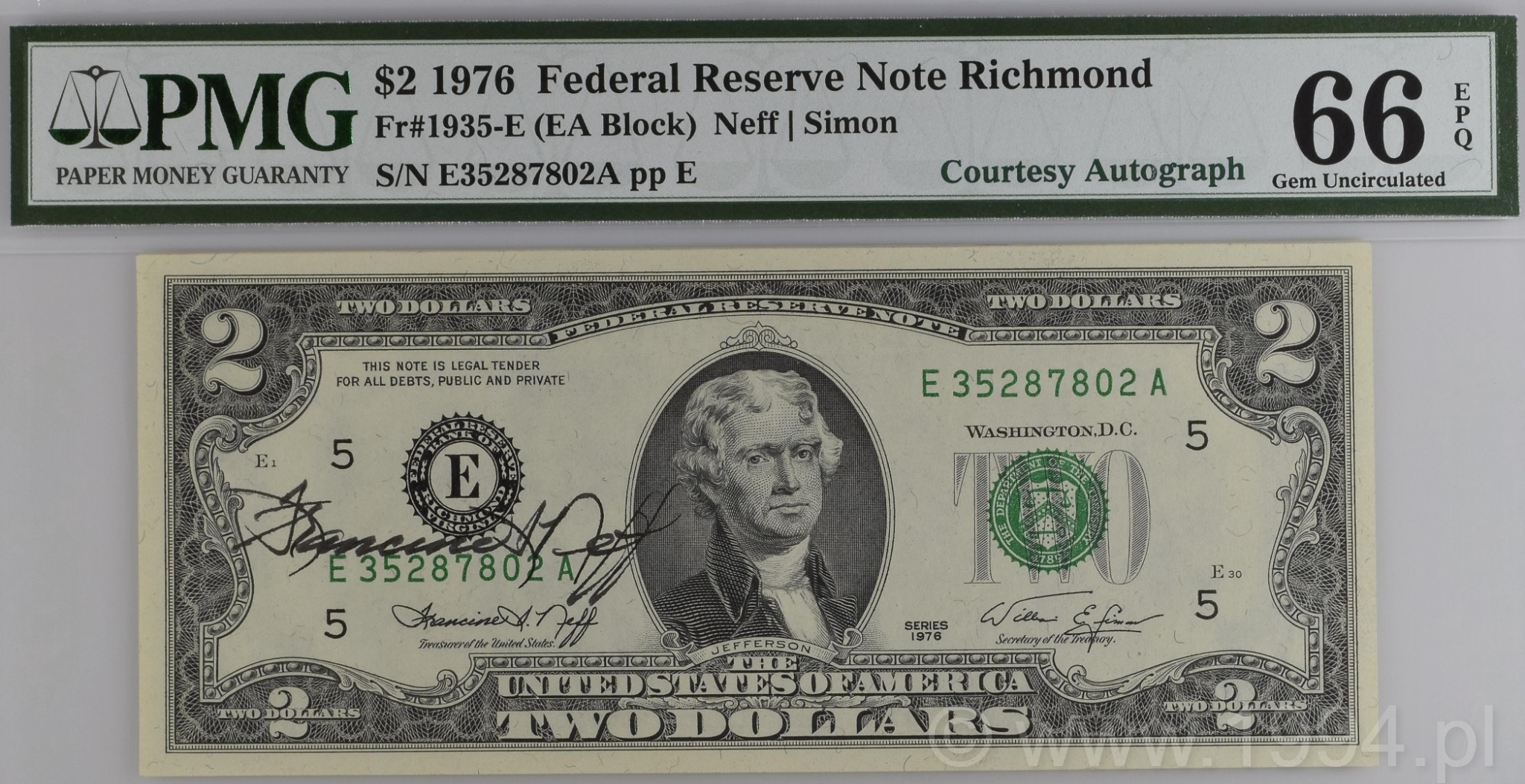
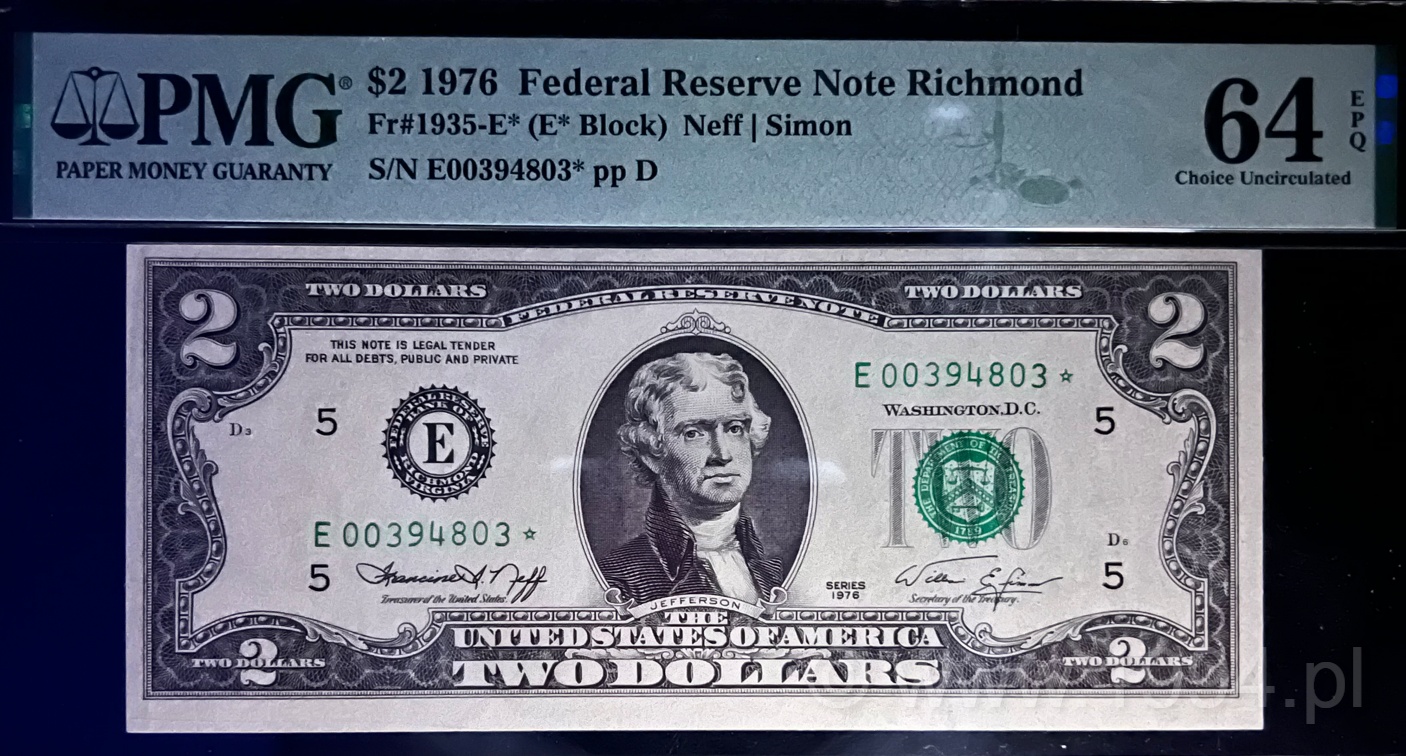

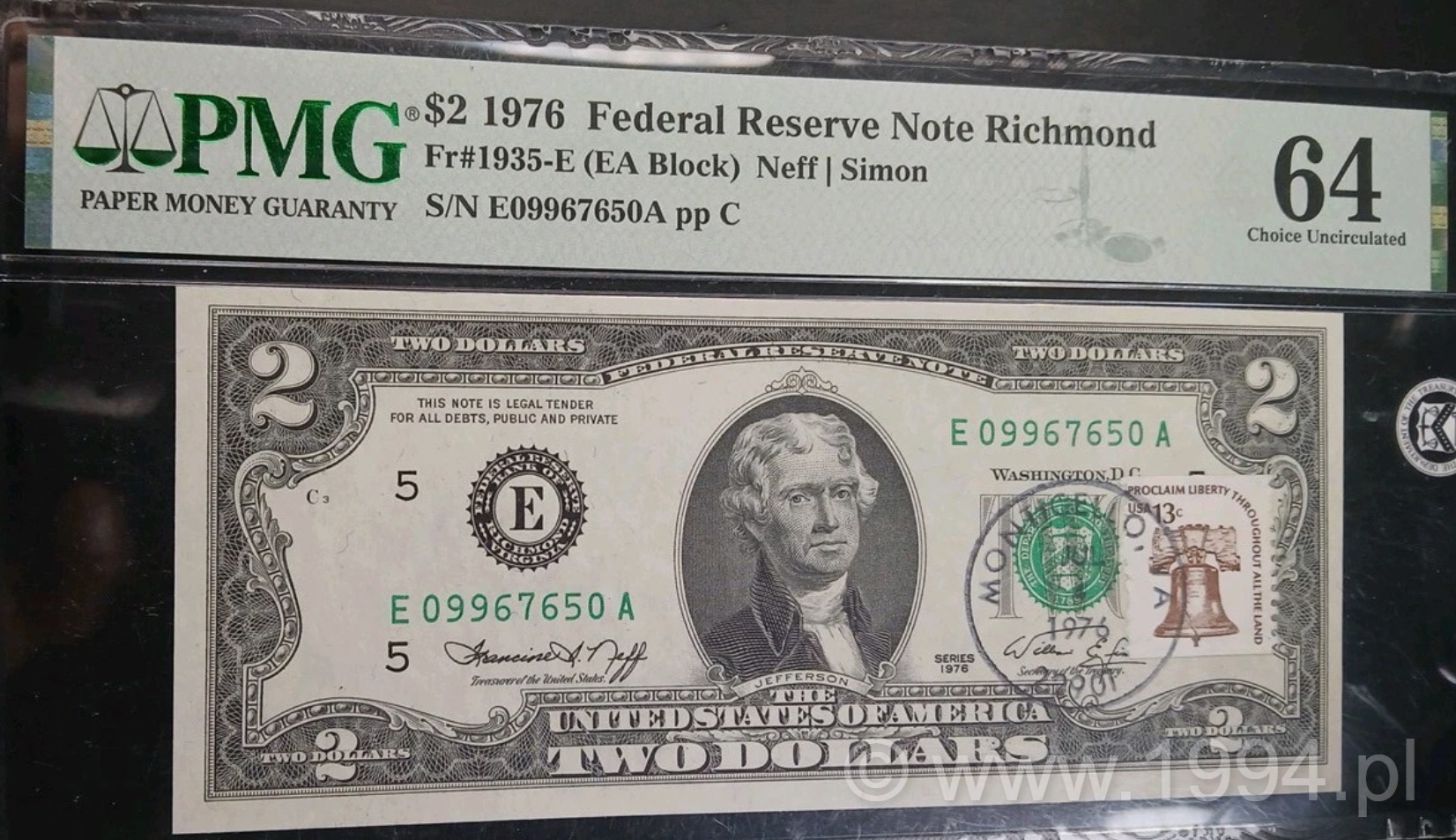
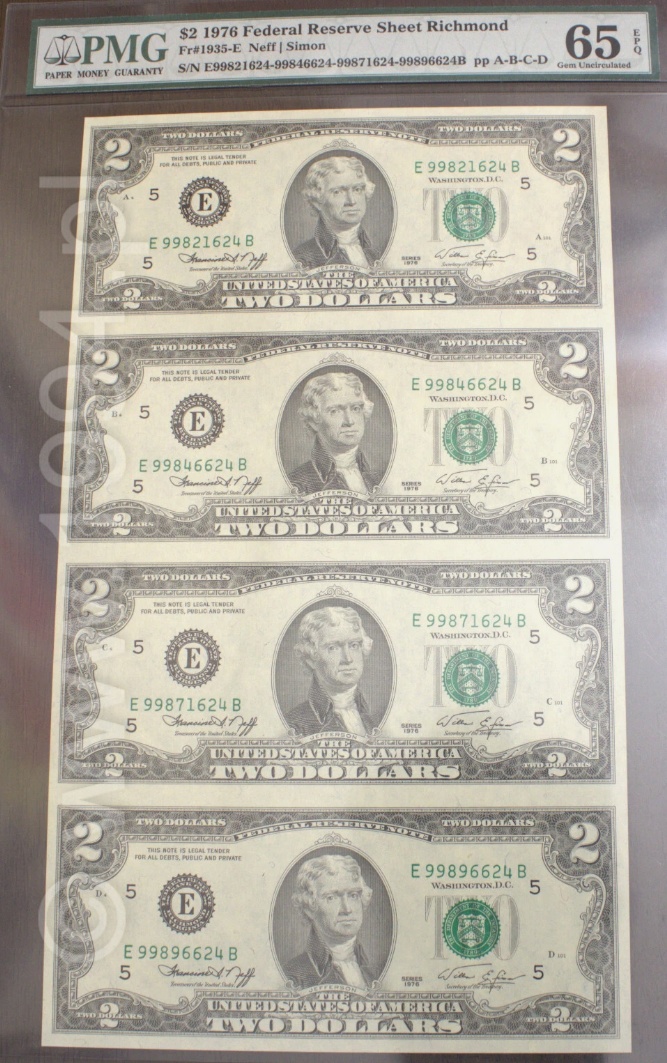
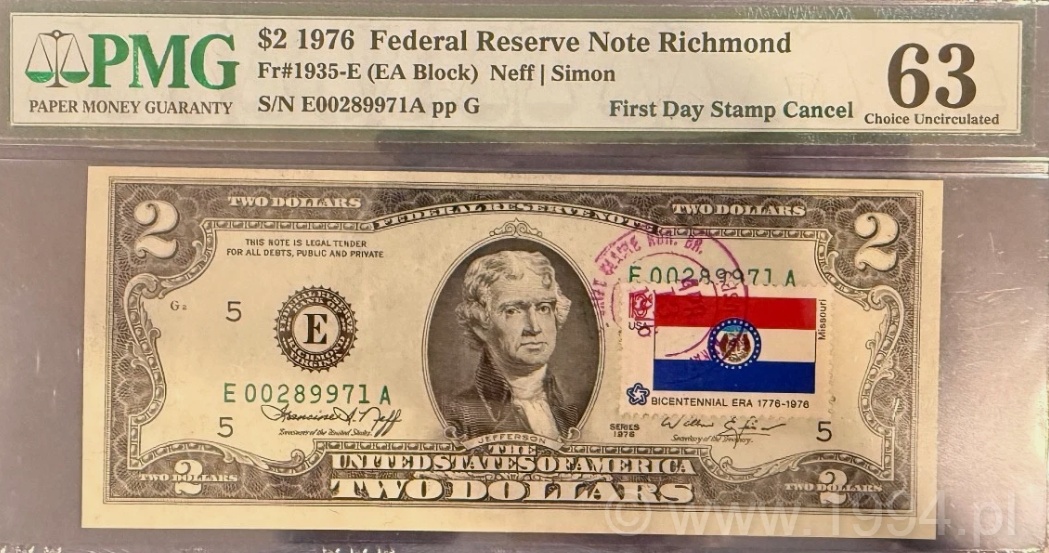
The national idea behind the Bicentennial $2. In 1976 the United States treated history itself as a public project: ships retraced colonial routes, cities rebuilt parade floats from 1776, and schoolchildren collected commemorative quarters. Yet the $2 bill was the only keepsake designed to circulate through every hand. It linked Jefferson, author of the Declaration, to Trumbull’s engraved vision of that same signing, uniting art, finance, and citizenship. These Richmond-District examples—autographed, starred, stamped, and sheeted—capture that once-in-a-century moment when money became the messenger of national memory.
Why this collection matters. Each piece documents a different facet of the 1976 release: government participation, public enthusiasm, and the Bureau’s precision printing. Together they form a miniature exhibition of America’s Bicentennial currency—the only paper-money issue ever created to commemorate independence itself, and a timeless reminder that even an everyday note can carry a country’s entire story.